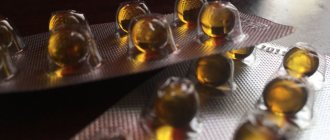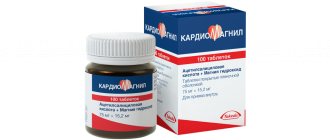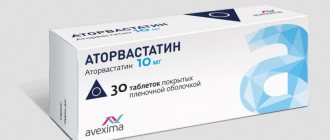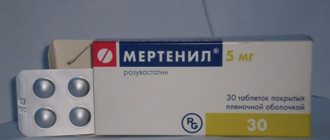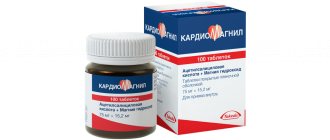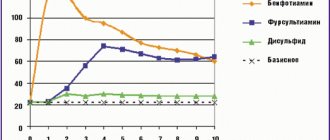A runny nose is a familiar phenomenon that often appears during the cold season. It occurs in adults and children. This can be a symptom of both sinusitis and sinusitis. The latter is much more serious, because pus forms in the maxillary sinuses. To prevent it from spreading further, urgent measures must be taken: use medications, physiotherapy, folk remedies, and nasal rinsing. One of these medications is Sinuforte.
Composition and description
Many people know that cyclamen juice painlessly removes pus from the maxillary sinuses. This preparation contains the juice of this plant and a solvent. The package also contains a sprayer and nozzle.
The solution for administration into the nasal sinuses is prepared by the patient independently. To do this, the juice is mixed with a solvent. Then it is inserted into the nose using a nozzle. The drug has an anti-edematous, secretolytic effect. The pus quickly dissolves and is removed from the sinuses.
The effect of the medicine lasts for an hour. The active substance has a thinning effect on mucus and a stimulating effect on the trigeminal nerve. As a result, secretion output is stimulated.
Sinuforte
Sinuforte is a herbal medicine used in otorhinolaryngological practice for the treatment of inflammatory diseases of the nasal cavity and sinus (maxillary, frontal, ethmoid) sinuses. All these diseases are united by lingering mucus discharge from the nose, obstruction of the nasal passages, and pain in the maxillofacial area. This group of diseases is usually seasonal and occurs more often in autumn and/or spring. Inflammation of the sinuses is accompanied by swelling of the mucous membranes, the outflow of mucus and air circulation are disrupted, and accumulation of inflammatory (including purulent) contents occurs. The effectiveness of treatment in this case will be determined not only by the elimination of the factor at the origins of the development of the pathological process, but also by the success of solving the problem of ensuring proper air circulation, outflow of mucus from the sinuses, and elimination of swelling of the mucous membranes. To achieve these goals, Georgian pharmacologists synthesized the herbal medicine Sinuforte, which contains the juice of alpine violet tubers (cyclamen). This plant is rich in cyclamines - biologically active substances of the saponin group. Cyclamines have the ability to activate reflex mucus secretion caused by irritation of the terminal formations of nerve fibers. This induced secretion ensures the physiological cleansing of the sinuses from viscous discharge. Being a herbal preparation, Sinuforte has a favorable safety profile and has a more gentle effect than drugs containing synthetic components. This drug is non-toxic, does not cause mutations and does not increase the risk of developing malignant tumors. It acts locally, is not absorbed into the systemic circulation and does not cause systemic side effects.
Local side effects may include increased salivation, a transient burning sensation in the nasopharynx, and hyperemia of the skin. The drug is contraindicated in persons with polyps in the sinuses and rhinosinusitis of allergic origin. Sinuforte can be combined with intranasal decongestants and systemic antibacterial drugs. The effectiveness of Sinuforte has been confirmed in a number of studies. In one of these clinical trials, the effectiveness and safety of the drug was studied in patients of different age groups with acute and chronic inflammation of the sinuses. As part of the study, Sinuforte was used once a day for 6-8 days. On the fourth day of pharmacotherapy, 60% of participants noted mitigation or complete elimination of headaches, and on the eighth day - 83%. At the end of the drug course, rhinorrhea stopped or its intensity significantly decreased in 86% of patients, elimination of obstruction of the nasal passages was noted in 83% of patients. Sinuforte is easy to use: the bottle with the drug is equipped with a dispenser spray. A single dose (2-3 drops) enters the nasal cavity with one click. The drug is used daily once a day for 6-8 days, but you can follow a different dosage regimen: every other day for 12-16 days. Instilation of Sinuforte into the nasal cavity provides a targeted effect directly on the pathological focus. To carry out a full course of medication, one package is enough. The drug is not addictive. The use of the drug significantly reduces the likelihood that a patient with sinusitis will require surgical intervention.
How to treat sinusitis with Sinuforte
Before using the drug, you must open both bottles, with juice and solvent. Then add the solvent to the lyophilisate, put on the sprayer and stir. Then do a control spray into the air. Now you can spray the medicine into your nose while holding your breath.
The drug is used once a day, one spray into each nostril. The course of treatment is a week, but if the medicine is administered every other day, the treatment lasts fourteen days. You can use antibacterial agents in parallel with Sinuforte treatment.
The drug creates a natural drainage effect. It also stimulates blood microcirculation in the sinuses. It does not affect the body, acting only locally.
The mucous membrane of the nasal cavity and paranasal sinuses is the first line of defense of the respiratory tract and the entire body from the effects of various damaging environmental agents - microorganisms, allergens, physical and chemical factors. The main mechanism that allows the successful destruction and removal of pathogens and pollutants is the mucociliary clearance system with the most important component - mucociliary transport - the unidirectional movement of foreign particles along with the mucus layer as a result of the rowing movements of the cilia [1].
Under conditions of normal functioning of mucociliary clearance, the bacterial flora in the respiratory tract has virtually no chance of significant growth and formation of a focus of infection; bacterial colonization is significantly facilitated against the background of any damage to the ciliated epithelium. Viral agents are one of the main factors damaging the mucous membrane of the respiratory tract. If viruses manage to penetrate through the mucus layer into epithelial cells, their intensive reproduction and death of the host cell begins. Clinically, the result of such exposure is the development of a local inflammatory reaction. In this case, the integrity of the mucous membrane is disrupted and a favorable opportunity is created for the colonization of this area by bacterial flora [2-5]. Inflammation of the mucous membrane caused by the virus is manifested by its swelling, an increase in the amount and stagnation of mucous secretion in the area of the pathological focus. These changes cause a block of natural anastomosis and deterioration of drainage of the paranasal sinuses, a violation of mucociliary clearance. Stagnation of secretions, impaired ventilation in the sinuses, hypoxia as a result of a decrease in the partial pressure of oxygen in the sinuses create favorable conditions for the formation of a focus of bacterial infection. It is known that against the background of any acute inflammatory process in the nasal cavity, there are changes of a similar nature in the paranasal sinuses; Computed tomography and magnetic resonance imaging can reveal signs of sinusitis in 95% of cases of acute respiratory disease, and only in 1-2% of patients does a focus of bacterial infection form in the sinuses [3, 5]. In connection with the above, the term “rhinosinusitis” is more adequate than sinusitis.
In a number of clinical cases, inflammatory changes in rhinosinusitis spread to the nasopharynx and the area of the auditory tubes, their patency is disrupted, ventilation of the tympanic cavity worsens, eustachitis, aseptic inflammation of the middle ear - exudative otitis media or acute purulent otitis media - may develop. Most otorhinolaryngologists consider the disruption of the ventilation and drainage functions of the auditory tube to be the main cause of exudative otitis media [1, 3, 6]. The next stage in the tympanic cavity is a decrease in air pressure and then an effusion is formed - transudate. In a fairly short time, the effusion becomes serous-mucosal, and exudative otitis media develops. Against this background, the patient is bothered by a feeling of fullness in the ear, decreased hearing, a feeling of fluid transfusion in the ear when changing the position of the head, and autophony. Otoscopically, a dull eardrum is detected; in many cases, a fluid level and air bubbles are visualized behind the eardrum. As already mentioned above, the etiopathogenetic factors for the development of rhinosinusitis and against this background of exudative otitis media are similar. According to the literature, exudative otitis media in terms of frequency of occurrence occupies one of the leading places among inflammatory pathologies of the middle ear [1, 3, 6].
Studying the problem of acute and chronic rhinosinusitis is relevant due to the steady increase in incidence and the lack of clear criteria for many issues in the diagnosis and treatment of this pathology.
In the summer of 2012, updated European recommendations for the management of patients with rhinosinusitis and nasal polyps were published based on the results of a number of randomized controlled clinical trials - EPOS 2012. This document allows us to significantly change the approach to some important aspects of the problem of rhinosinusitis; the document widely reflects the issues of defining rhinosinusitis, including including “difficult rhinosinusitis”, classification, epidemiology, predisposing development factors and treatment.
One of the main directions of treatment tactics in patients with acute rhinosinusitis (ARS) is drainage of the paranasal sinuses to improve the evacuation of pathological secretions from them [5, 7]. In this aspect, the drug Sinuforte (Spain) deserves some attention - a multifunctional standardized and dosed nasal spray for the treatment of acute and chronic rhinosinusitis, which appeared in the arsenal of Russian doctors in 2006. The action of Sinuforte determines the physiological cleansing of pathological contents, restoration of drainage and improvement of ventilation of the paranasal sinuses . The drug Sinuforte can be called a fundamentally new technology for the conservative treatment of acute and chronic sinusitis; Currently, it has no analogues on the Russian pharmaceutical market. The mechanism of action of Sinuforte is based on irritation of the nasal mucosa and stimulation of the production of physiological secretions in the paranasal sinuses. After spraying, the active ingredients of Sinuforte are distributed and adsorbed on the surface of the nasal mucosa in the area of natural anastomoses, without directly penetrating into the sinuses. The irritating effect of saponins forms a nerve impulse that spreads from the endings of the trigeminal nerve through the brain stem along parasympathetic fibers into the mucous membrane of the nasal cavity, auditory tubes, paranasal sinuses and tympanic cavities, which causes hypersecretion of mucus, increased levels of microcirculation and improved lymphatic drainage, i.e. beneficial effect on the course of the inflammatory process. Cyclamen saponins are surfactants and are able to reduce the surface tension of the cell membranes of the mucous membrane. Mucus secretion is also improved due to the direct osmotic effect of Sinuforte components, thereby facilitating nasal breathing [8-11]. A few minutes after administration of the drug, patients notice rhinorrhea, which can last up to two hours without causing discomfort. An increase in the amount of mucus improves its rheological properties, which helps improve mucociliary transport. Cyclamen saponins are not adsorbed from the mucous membrane and are gradually eliminated from the nose along with hypersecretion products [12-14].
Currently, significant experience has been accumulated in the use of this drug in ENT practice. Thus, at the Moscow Scientific and Practical Center of Otorhinolaryngology and at the Department of Otorhinolaryngology, Russian National Research Medical University named after. N.I. Pirogov in 2006 conducted a randomized multicenter study of the effectiveness and safety of Sinuforte in the treatment of patients with acute rhinosinusitis and exacerbation of mild and moderate chronic rhinosinusitis. Patients in the main group received monotherapy with Sinuforte, while patients in the control group received traditional treatment, including antibiotic therapy and puncture of the paranasal sinuses. The duration of treatment in both groups was 7 days. Based on the results of treatment, it was noted that the effectiveness of Sinuforte did not differ significantly from the effectiveness of traditional treatment, the drug did not have a statistically significant effect on local and general immunity and, unlike traditional treatment, actively improved mucociliary clearance of the nasal cavity and paranasal sinuses [15] .
In 2007, at the Otorhinolaryngology Clinic of the Voronezh State Medical University, a study was conducted on the effectiveness of endonasal use of Sinuforte in acute exudative rhinosinusitis. It has been shown that the use of Sinuforte allows one to achieve a clinical effect in patients with catarrhal rhinosinusitis on average after 4.2 days, without Sinuforte - 2-3 days later. The transport function of the ciliated epithelium was restored in these patients on the 7th and 9-10th days, respectively. The data obtained as a result of the study indicate the high effectiveness and safety of Sinuforte in the treatment of acute rhinosinusitis and allow us to recommend its wider use as monotherapy for catarrhal processes in the paranasal sinuses [16]. The effectiveness and safety of Sinuforte in the treatment of patients with acute, chronic rhinosinusitis and exudative otitis media was also studied in a number of other clinical studies conducted in the Russian Federation and abroad. The results of these studies demonstrate the optimization of treatment regimens for mild and moderate forms of acute rhinosinusitis when Sinuforte is included in therapy, and the high effectiveness (90% or more) of monotherapy with this drug, comparable to the effectiveness of traditional treatment. Good results have been shown using Sinuforte as initial therapy. The investigator and patients in all cases assessed the tolerability of the drug as “good” and “satisfactory.” There are no reports of cases of drug overdose, but its most likely manifestation may be a burning sensation of the nasopharyngeal mucosa [9, 10, 16—26].
In 2011, the first multicenter, randomized, double-blind, placebo-controlled study of the effectiveness and safety of a phytotherapeutic nasal spray containing the components of European cyclamen (Cyclamen europaeum) in the treatment of patients with acute rhinosinusitis was conducted in Germany and Spain. The study involved 99 adult men and women aged 18 to 65 years with moderate to severe acute suppurative rhinosinusitis with a symptom duration of more than 7 days and less than 12 weeks, who were randomly divided into 2 groups. The severity of rhinosinusitis symptoms was assessed using a visual analogue scale (VAS). All patients included in the study received amoxicillin 500 mg three times a day for 8 days, patients of the main and control groups (51 and 48 people, respectively) received the study drug or placebo in the form of a nasal spray once a day for 15 days. Change in the total number of symptoms was assessed on day 7 of treatment; dynamics of the number of individual symptoms of rhinosinusitis and endoscopic picture - on the 7th and 15th days. Monitoring for the occurrence of adverse events, as well as the development of any complication of progressive rhinosinusitis, was carried out throughout the study. The most common adverse events were nasal burning and mild epistaxis; no serious adverse events were recorded. When assessing the treatment results on day 7, there were no statistically significant differences in the total and individual number of symptoms in patients taking the phytotherapeutic nasal spray compared to patients taking placebo. However, a more pronounced reduction in pain in the facial area and improvement in the results of endoscopic examination of the nasal cavity on the 7th day of treatment in the main group (3.2±2.3 and 2.7±2.2, respectively) indicated the positive effect of using European cyclamen in treatment of patients with acute rhinosinusitis. Thus, the results of this study demonstrated the clinical safety and a number of positive effects of the use of phytotherapeutic nasal spray with European cyclamen in the treatment of patients with moderate or severe forms of acute purulent rhinosinusitis [27]. It is on the basis of the results of this study that EPOS 2012 recommends the use of Sinuforte nasal spray in the treatment of acute viral and post-viral rhinosinusitis - category of evidence Ib (one randomized controlled trial), strength of recommendation A [5].
At the Department of Pediatric Otorhinolaryngology, Russian National Research Medical University named after. N.I. Pirogov in 2009 conducted a simple open randomized comparative study of the effectiveness of the drug Sinuforte in patients with rhinosinusitis and exudative otitis media in children aged 5 to 12 years. The purpose of the study was to evaluate the effectiveness, safety and tolerability of two single doses of Sinuforte (1.3 and 0.65 mg) during a course of use as part of complex therapy and to expand the indications for use of the drug in children aged 5 to 12 years with appropriate changes. in the Instructions for Use. The data obtained as a result of the study indicate the high effectiveness and safety of the drug Sinuforte in combination with other drugs in the treatment of children with rhinosinusitis accompanied by exudative otitis media. It was revealed that the original mucoactive effect of Sinuforte in combination with a standard regimen of conservative therapy can reduce the need for drainage procedures and help reduce the duration of antibacterial therapy. A decrease in the time required for restoration of the functional activity of the nasal mucosa during the use of Sinuforte indicated a good anti-relapse effect of the drug. It was also noted that a daily dose of the drug of 0.65 mg compared to a dose of 1.3 mg has a similar effect on the mucous membrane of the nasal cavity and auditory tube, but is subjectively perceived by patients more favorably, which made it possible to recommend this form of the drug for use in pediatric practice [2].
In 2011-2012 Department of Otorhinolaryngology MONIKI named after. M.F. Vladimirsky, based on a number of clinics in the Moscow region, conducted a simple open study of the effectiveness and safety of therapy with the drug Sinuforte in initial monotherapy in adolescents aged 7 to 15 years with moderate acute rhinosinusitis, accompanied by exudative otitis media. The study did not include patients with concomitant allergic diseases and mild and severe rhinosinusitis.
We observed 47 patients aged 7 to 15 years; average age - 11 years; Of these, 21 (44.7%) were female, 26 (55.3%) were male. The average duration of the disease before the start of treatment under medical supervision was 3.4 days, the minimum value was 2 days, the maximum was 6 days. The examination scheme included identifying complaints, collecting anamnesis, an objective assessment of the presence and severity of rhinosinusitis, a subjective assessment of the patient’s general condition, a complex of laboratory and instrumental studies (rhinoscopy, endoscopy, cytological examination of nasal mucus, radiography of the paranasal sinuses, impedance measurements, audiometry). Clinical examination of patients was carried out on the day of inclusion in the study, then on the 3rd, 5th, 8th day and, if necessary, 15-30 days from the start of treatment, instrumental examination - on the 1st and 8th day of observation. It should be noted that a number of patients, before contacting an otorhinolaryngologist and starting treatment on their own or as prescribed by a general practitioner (therapist), used local decongestants, and in some cases secretolytics. After the initial examination, almost all patients were stopped taking other groups of drugs and prescribed a course of Sinuforte.
Based on the results of dynamic examination during treatment, decisions were made on further tactics for patient management. Correction of treatment for medical reasons was carried out mainly on the 3rd day of treatment, in 3 clinical cases - on the 5th day. Treatment was supplemented with systemic antibacterial therapy in 7 patients, 26 patients were prescribed decongestants and therapeutic manipulations - pneumomassage of the eardrums, anemization of the mouths of the auditory tubes, physiotherapy. The duration of the study was on average 1 month, of which treatment with Sinuforte was carried out once daily, one dose in each half of the nose for 7 days, then the patient was monitored.
Patient complaints were assessed using a 10-point VAS. Patients complained of low-grade fever, mucous or mucopurulent discharge from the nose, drainage of discharge down the back wall of the pharynx, difficulty in nasal breathing, headache, decreased sense of smell, stuffy ears, decreased hearing, and a feeling of fluid transfusion in the ear. The average score for the severity of subjective symptoms of rhinosinusitis and otitis at the first examination was 6.5 points. The dynamics of the severity of subjective symptoms of rhinosinusitis are presented in Fig. 1.
Figure 1. Dynamics of complaints from patients with moderate acute rhinosinusitis, accompanied by exudative otitis media.
When examined by a doctor, the presence of pathological discharge in the nasal cavity, drainage of discharge along the back wall of the pharynx, hyperemia of the mucous membrane of the nasal cavity and nasopharynx, dullness and turbidity of the eardrums, blurred identification marks, marginal hyperemia of the eardrums, and the level of fluid behind the eardrums were assessed. The dynamics of changes in the otoscopic picture are presented in Fig. 2.
Figure 2. Dynamics of the otoscopic picture in patients with moderate acute rhinosinusitis, accompanied by exudative otitis media.
According to radiography of the paranasal sinuses, among those included in the study, patients with reduced pneumatization of the maxillary sinuses predominated - 35 (74.5%) people and the presence of fluid in the maxillary sinuses - 11 people (23.4%); in 14 patients (29.8%) the process in the maxillary sinuses was bilateral, in 13 (27.7%) in addition to maxillary rhinosinusitis there was a decrease in the airiness of the cells of the ethmoidal labyrinth, in 1 - veiling of the frontal sinus (2.1%). Unilateral exudative otitis media was observed in 21 patients (44.7%), of which 13 (27.7%) had eustachitis on the other side, and in 26 patients (55.3%) the process was bilateral. When examining 12 patients, the presence of clinically significant deviations was revealed, characterized by curvature of the nasal septum to varying degrees, hyperemia of the mucous membrane of the nasal cavity and nasopharynx and pathological discharge in the nasal cavity in all patients, in 23 patients - the presence of postnasal discharge. Audiometry and impedance data are presented in the table.
A cytological examination of discharge from the nasal cavity in all patients before treatment with Sinuforte revealed epithelial cells (columnar epithelium in varying degrees of degeneration and squamous epithelium) and neutrophilic leukocytes from small to significant quantities, eosinophils were detected in 9 patients, bacterial cells in 41 .
On the 3rd day, the VAS score of subjective symptoms of acute rhinosinusitis and exudative otitis media was 4.9, on the 5th - 3.8, on the 8th - 1.5 points.
During the treatment and observation period, examination data and objective studies were analyzed. On the 8th day of treatment, the mucous membrane of the nasal cavity and nasopharynx acquired its usual color in almost all patients; during rhinoscopy, a small amount of mucous discharge was determined in the common nasal passages. In 39 (83%) patients, normalization of the otoscopic picture was noted, in 8 (17%) slight retraction of the eardrums remained. Tympanometry results on the 8th day: 36 patients had type A, 11 had type C (with a pressure in the tympanic cavity of at least 120).
Thus, during treatment, there was an improvement in both the subjective assessment of the patients’ condition and the objective picture of the disease. 1-2 weeks after treatment, none of the patients in the study group had any complaints; 32 patients were examined 15-30 days after the onset of the disease; no acute pathology of the ENT organs was detected. The safety of the drug was assessed throughout the study based on patient interviews and physical examination. No adverse events, including allergic reactions, were observed in any patient.
The results of the study allow us to recommend the drug Sinuforte for the treatment of patients diagnosed with acute rhinosinusitis, accompanied by exudative otitis media, including as monotherapy. The effectiveness of this treatment in terms of duration is comparable to traditional methods of treating such patients [2, 3, 14, 18, 20], however, a reduction in the drug load, a simple scheme for using the drug, and its proven safety are undeniable arguments for choosing Sinuforte as the initial therapy for the above ENT- pathology.
Who should not take the drug
There are contraindications for the use of the drug:
- children under five years of age;
- pregnancy;
- lactation;
- high blood pressure;
- nasal polyps;
- sinus cysts;
- rhinosinusitis;
- allergic rhinosinusopathy.
If you have hypertension of the first degree, you should consult a doctor before use.
Side effects
Sometimes side effects occur when using the drug:
- facial redness;
- burning in the nose;
- increased salivation;
- migraine;
- pinkish discharge from the nose.
If the medicine gets into the eyes, inflammation of the conjunctiva may develop.
If a rash or shortness of breath appears while using the product, you should stop taking it and seek medical help.
Sinuforte nasal spray - reviews
Catherine
I cannot say that Sinuforte is an excellent alternative to punctures. Because they gave me punctures, and I know what it is. This is not a one-time thing, I personally am 7! They pierced one nostril once and the other 3 times. And Sinuforte spray helped in a week. The difference is noticeable, the puncture and Sinuforte are not even worth comparing.
Shaforostova Natalya
https://irecommend.ru/content/pomog-ot-gaimorita-no-nuzhno-byt-ostorozhnee
Having fallen ill with sinusitis and not being able to visit a doctor, I had to use Sinuforte. It works quickly, after a minute the sinuses begin to clear and everything that has accumulated there comes out. I sneezed so hard that I thought I was sneezing my brain out, but after that it became easier. In addition to Sinuforte, I also used other medications, but I still suffered for a few days. Since using Sinuforte brought real relief, I made a big mistake - I started using it more often than allowed and indicated in the instructions. This led to a sad result. Having sprayed it once again and getting ready to sneeze, I... felt terrible pain, a burning sensation and sneezed scarlet blood! Apparently the overdose damaged the blood vessels and I started having nosebleeds! Despite this experience, I think Sinuforte is good, the main thing is to use it without fanaticism and strictly according to the instructions.
Canopus
https://irecommend.ru/content/oblegchenie-posle-odnogo-pshika
I tried the spray on myself and my sinusitis was gone. After the first spray, you begin to sneeze heavily, as if you took snuff, but much stronger. At the same time, snot and tears flow heavily, but it’s quite tolerable. The next day it becomes much easier. The treatment lasts several days, but it feels like you can stop treatment on the second or third day, as the runny nose goes away. After treatment, as a rule, half a bottle remains, you can store it for only 15 days, and it’s a pity to throw it away - the drug is expensive. Hence the advice: dilute not all the powder with water, but half (of course, take 2 times less water). Sinuforte is a lottery - for some helps, some don't. But until you try, you won't know
AlexRQ
https://irecommend.ru/content/voskhititelnye-oshchushcheniya-effekt
I read reviews where many complain that it doesn’t help. I believe that it will not help against ARVI. After all, the action is based on an allergic reaction. Hence the fact that it does not work for everyone. This is a banal mechanical cleansing of the nasal cavity. Some claim that you can get by with a free analogue - Kalanchoe, and not this remedy for 1,500 rubles. Maybe someone can do it. I also tried Kalanchoe. There is an effect, but it is very weak.
Of course, the treatment process is unpleasant: after instillation there is a burning sensation in the nose and intense sneezing, which lasts up to 2 hours (the peak is 10-15 minutes, then everything subsides sharply), but the disease is much more unpleasant.
Everything is extremely unaesthetic, the amount of nasal discharge exceeded all possible assumptions about the volume of the maxillary sinuses)) But the main thing is the positive effect - he defeated sinusitis.
Used once a day for 10 days. If possible, it is better not before bedtime - otherwise it will not let you sleep.
MiruMaj
https://otzovik.com/review_137162.html
Advantages:
effective!
Flaws:
high price
In the previous review
Clean noses I touched upon the topic of chronic rhinitis and, as a result, a more complicated runny nose* - sinusitis. Children are not diagnosed with sinusitis, but the course of such rhinosinusitis (inflammation of the paranasal sinuses) is quite unpleasant. My daughter, as I wrote, has long-lasting runny noses. Therefore, I have a lot of experience in how to treat it.
Not everyone can trust herbal medicine, or treatment with preparations made on the basis of “living water” and so on. And then I remembered SINUFORT. This is a pharmaceutical preparation based on the medicinal cyclamen bulb. We use it when rhinosinusitis does not want to go away at all. Indications for use: acute and chronic sinusitis, sinusitis, frontal sinusitis, ethmoiditis, sphenoiditis.
The drug SINUFORTE is not cheap. For one course – 1200 rubles. You can store it after mixing cyclamen powder and a special solution for no more than 16 days. Unused solution will have to be thrown away. But this drug has helped us more than once. Under the influence of cyclamen, everything bad begins to move away from the sinuses, thereby allowing the nose to cleanse itself. The usual course is 6 days, once a day. It is important to note that the drug can only be used by children over 12 years of age. After injecting SINUFORTE, you feel a burning sensation, you want to sneeze - in general, the treatment process begins.
If you are not ready to spend, then here is another move for you. One doctor prescribed us to make such a medicinal solution ourselves from a cyclamen bulb when our daughter was 10 years old. We bought the bulb at the market from a Georgian grandmother who brought cyclamen from Georgia. If the onion is dry, then you need to wash it and fill it with water for 6 hours. If it's fresh, just wash it. Cut off a small piece and peel. Wrap the rest in cheesecloth and refrigerate. Place this piece in a garlic press. Take the resulting juice into a pipette and add it to the saline solution - 2 drops of juice per 15 ml of solution. The course of treatment is 10 days. Instill two drops 2-3 times a day, depending on the severity of the runny nose. The drops are quite hot. So prepare the sick person).
Of course, it’s up to you to decide whether to buy SINUFORTE or not! But I am an ardent opponent of surgical intervention and various “cuckoos” that are used to “treat” sinusitis in Russia. Both the drug prepared at home and SINUFORTE helped us. The latter seemed to me softer in action. There is no such burning sensation.
Like every medical drug, SINUFORTE has contraindications: children under 12 years of age, pregnancy and breastfeeding, allergic reactions, hypersensitivity to the components of the drug, cystic polyposis rhinosinusitis, allergic rhinosinusopathies.
In any case, consult your doctor and do not self-medicate!
*Price in photo in hryvnia. Since this time a runny nose caught us in Kyiv.
And best of all – don’t get sick!!
moonlight
https://otzovik.com/review_149486.html
Advantages:
Efficiency ; Speed of action; Availability .
Flaws:
Relatively high price; Short shelf life; Due to the special effect, not everyone can use it.
Oh, how this sinusitis got me, like an invasion every year in the November-February period, I had a terrible runny nose, with purulent discharge. I tried a lot of folk remedies: I put chestnuts in my nose, I put oil in my nose, I put aloe in my nose... brr. After fruitless attempts to recover using traditional methods, it was time to go to the hospital. One ENT doctor prescribed a puncture, another I “cuckooed” (by the way, it didn’t help much), took Sinupret, it seemed to feel better for a week, then I caught a cold at work somewhere, and it all started again. And then, having heard from my friends about the product “Sinuforte”, when I found out the price, I was a little upset, but still decided to take it. Oh Gods, after the first presses, I thought that the drug was expired, or it was a pill, and they sent me the crap =) After this drug, I realized that you don’t have to be a drug addict in order to have your head in the clouds) in general, tears flowed, and all the purulent discharge accumulated in the maxillary sinuses came out. The sinusitis disappeared within three days after use, and I saved a lot of money (despite the considerable price of the drug), time, and nerves.
Descovided
https://otzyv.expert/ekstrennaya-pomosh-pri-gaymorite-1170035
Advantages:
Effect, help in treatment
Flaws:
Price, burning in nose
Details:
I became very familiar with sinusitis two years ago. And I met unsuccessfully, I was pregnant, and then suddenly there was some kind of ARVI and both my husband and I began to have sinusitis. I didn’t immediately understand that it was sinusitis. The runny nose persisted and it didn’t go away and didn’t go away, and then suddenly headaches and toothaches began. Moreover, my teeth hurt out of nowhere. And then it dawned on me that it was sinusitis.
Yes, I self-medicate; unfortunately, we do not have a normal clinic. My husband immediately bought Sinuforte for himself. It looks like this:
And this is a small bottle with a spray inside:
I remember my husband's first reaction. He sprayed himself with the medicine, then widened his eyes in surprise (there was a terrible burning sensation there) and began waving his hands to give him napkins. He couldn't speak. And then he began to have a terrible sneeze, he sneezed for 5-10 minutes without stopping. And when he caught his breath, he finally concluded that he felt much better. And that you can’t spray in both nostrils at the same time - you’ll go crazy. We need to take turns. Because the effect is very “hard”.
Pharmacological properties and indications for use: Instructions for use, side effects: Interaction with other drugs and special instructions:
Storage conditions, expiration date and manufacturer information:
Sinuforte is prohibited during pregnancy, but I was already quite pregnant, and when sinusitis tormented me, I also sprayed myself with this medicine - Sinuforte - several times. And it became easier for me too. The hellish toothache was simply unbearable.
In about 2 weeks (sinusitis lasted forever), my husband and I got rid of ARVI and all its consequences. And Sinuforte helped both of them.
Recently I also had a runny nose, not so severe, but it still didn’t go away and I sprayed myself with a spray in my nose. And, apparently, I didn’t have such severe sinusitis, because the medicine had a very evil effect on me - it burned to the point of impossibility. And I made a smart conclusion for myself that it should still be used only for prolonged sinusitis.
But Sinuforte definitely helps, even though it stings, I now know this personally! The medicine is good, but expensive. The price of Sinuforte is 1600 rubles or more. The bottle is enough for the entire course of treatment.
Analogues of the drug "Sinuforte"
The drug does not have an exact analogue in composition. But there are drugs similar in action to it.
Here is a list of similar tools:
- Otrivin;
- Aqualor;
- Xylene;
- Galazolin;
- Tizin;
- Rhinonorm;
- For nose;
- Dr. Theiss Nazolin;
- Xymelin;
- Xylobene;
- Histimet;
- Eucazoline Aqua;
- Asterisk NOZ.
The cheapest of them, of course, is Zvezdochka NOZ.


